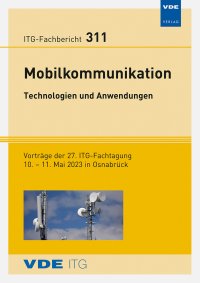6G NeXt — Towards 6G Split Computing Network Applications: Use Cases and Architecture
Conference: Mobilkommunikation - 27. ITG-Fachtagung
05/10/2023 - 05/11/2023 at Osnabrück
Proceedings: ITG-Fb. 311: Mobilkommunikation – Technologien und Anwendungen
Pages: 6Language: englishTyp: PDF
Authors:
Melnyk, Sergiy; Zhou, Qiuheng (Intelligent Networks, German Research Center for Artificial Intelligence (DFKI GmbH), Kaiserslautern, Germany)
Schotten, Hans D. (Intelligent Networks, German Research Center for Artificial Intelligence (DFKI GmbH), Kaiserslautern, Germany & Institute for Wireless Communication and Navigation, University of Kaiserslautern-Landau, Kaiserslautern, Germany)
Galkow-Schneider, Mandy; Friese, Ingo (Deutsche Telekom AG, Berlin, Germany)
Pfandzelter, Tobias; Bermbach, David (Mobile Cloud Computing Group, Technische Universität Berlin & ECDF, Berlin, Germany)
Bassbouss, Louay; Zoubarev, Alexander; Neparidze, Andy (Fraunhofer FOKUS, Berlin, Germany)
Kritzner, Arndt (Logic Way GmbH, Schwerin, Germany)
Zschau, Enrico (SeeReal Technologies GmbH, Dresden, Germany)
Dhara, Prasenjit; Goering, Steve; Menz, William; Raake, Alexander (Audiovisual Technology Group, Technische Universität Ilmenau, Germany)
Ruether-Kindel, Wolfgang; Quaeck, Fabian; Stuckert, Nick; Vilter, Robert (Aviation Engineering Group, Technical University of Applied Sciences Wildau, Germany)
Abstract:
The definition of the sixth generation mobile communication is in the full swing. Mobile communication aims for the convergence of physical, human and digital world. Research project 6G NeXt is considering two demanding use cases, holographic communications and drones anti-collision system, which set heterogeneous requirements on the communication as well as the computing infrastructure. In both use cases, the clients are widely spread in the network and are cooperatively interacting with each other. Especially for holographic communication, also high processing power is required. This makes a high-speed distributed backbone computing infrastructure, which realises the concept of split-computing, inevitable. Furthermore, tight integration between processing facilities and wireless network is required in order to provide adequate quality of service to the users. This paper illustrates the use case scenarios and their requirements. Afterwards, an appropriate solution approach to realise those is elaborated. Here, the novel technological approaches are discussed based on the developed overall communication and computing architecture.


